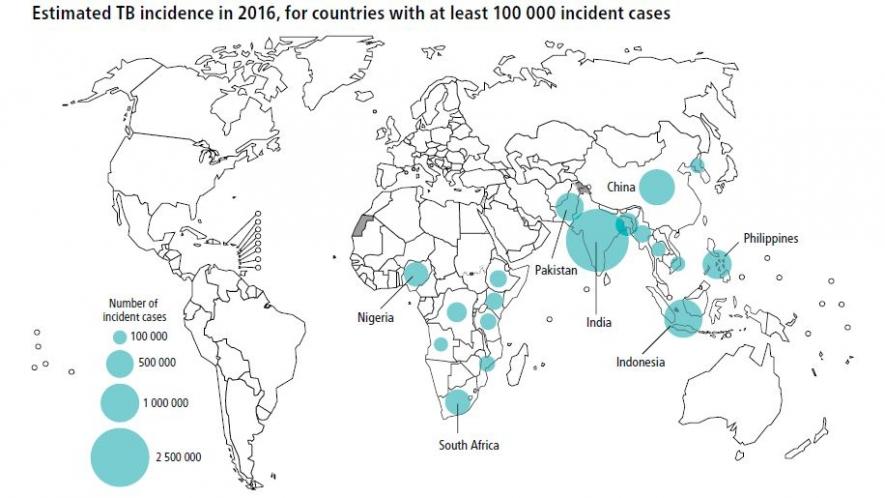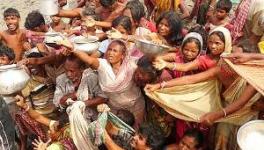Global Tuberculosis Report 2017: Have We Learnt Any Lessons in the Past 20 Years?

With an estimated 27.9 lakh patients suffering from TB in 2016, and up to 4.23 lakh estimated deaths, India tops the list of the seven nations which had 64 per cent of all new tuberculosis (TB) cases worldwide in 2016. India is followed by Indonesia, China, Philippines, Pakistan, Nigeria and South Africa in the list.
The Global Tuberculosis Report 2017, which is the 20th report since 1997, throws light on how the world fared in dealing with the disease in the year 2016. It stated that "In 2016, there were an estimated 10.4 million new TB cases worldwide; 10 per cent of which were people living with HIV. Seven countries accounted for 64 per cent of the total burden, with India bearing the brunt.” An estimated 1.7 million people died from TB, including nearly 400,000 co-infected with HIV, recording a drop of 4 per cent as compared to 2015.
Since 1997, World Health Organization has been publishing the Global Tuberculosis Report. It is a document which details the situation of tuberculosis disease, its trends, and health policies to effectively deal with it.
TB, an infectious disease caused by Mycobacterium tuberculosis mostly affects the lungs, but can also affect other organs of the body. Historically, it was known as Consumption because it makes the persons suffering from it very weak.
Over the years, scientific and medical advances have aided the world in effectively dealing with TB and its complications. Prevention and control of the disease involves BCG vaccination, screening those at risk, early detection, proper nutrition and treatment of cases with first line of Anti-Tubercular drugs. In the case of drug resistance, the second line of anti tubercular drugs will be used to treat ‘Drug Resistant TB’; MDR-TB and XDR-TB.
What becomes clear with every years report is the increasing complexities in dealing with the disease, and a disappointment that the world would not be able to achieve the target of ending TB by 2020. It has been proven many times that TB as a disease is closely linked to the socioeconomic conditions of a person, and medical/scientific interventions alone would not suffice to deal with it. In the times of increasing inequalities, TB stands as a mirror to the poor living standards and malnutrition in our country.
The report rightly points out underreporting and under diagnosis of TB cases continues to be a challenge, especially in countries with large unregulated private sectors and weak health systems. Also interesting is the case of some developed countries showing an increase in Drug resistant TB, exposing the social determinants within the rich countries.
At a time when political parties in India are talking more about matters of illness and healthcare services, it must be seen if any meaningful solutions can be implemented. TB is not merely a disease, it is indicator of socio-economic inequalities and failing public health systems in our country. The inequalities leading to TB’s epidemic need to be dealt with effectively.
Disclaimer: The views expressed here are the author's personal views, and do not necessarily represent the views of Newsclick.
Get the latest reports & analysis with people's perspective on Protests, movements & deep analytical videos, discussions of the current affairs in your Telegram app. Subscribe to NewsClick's Telegram channel & get Real-Time updates on stories, as they get published on our website.























